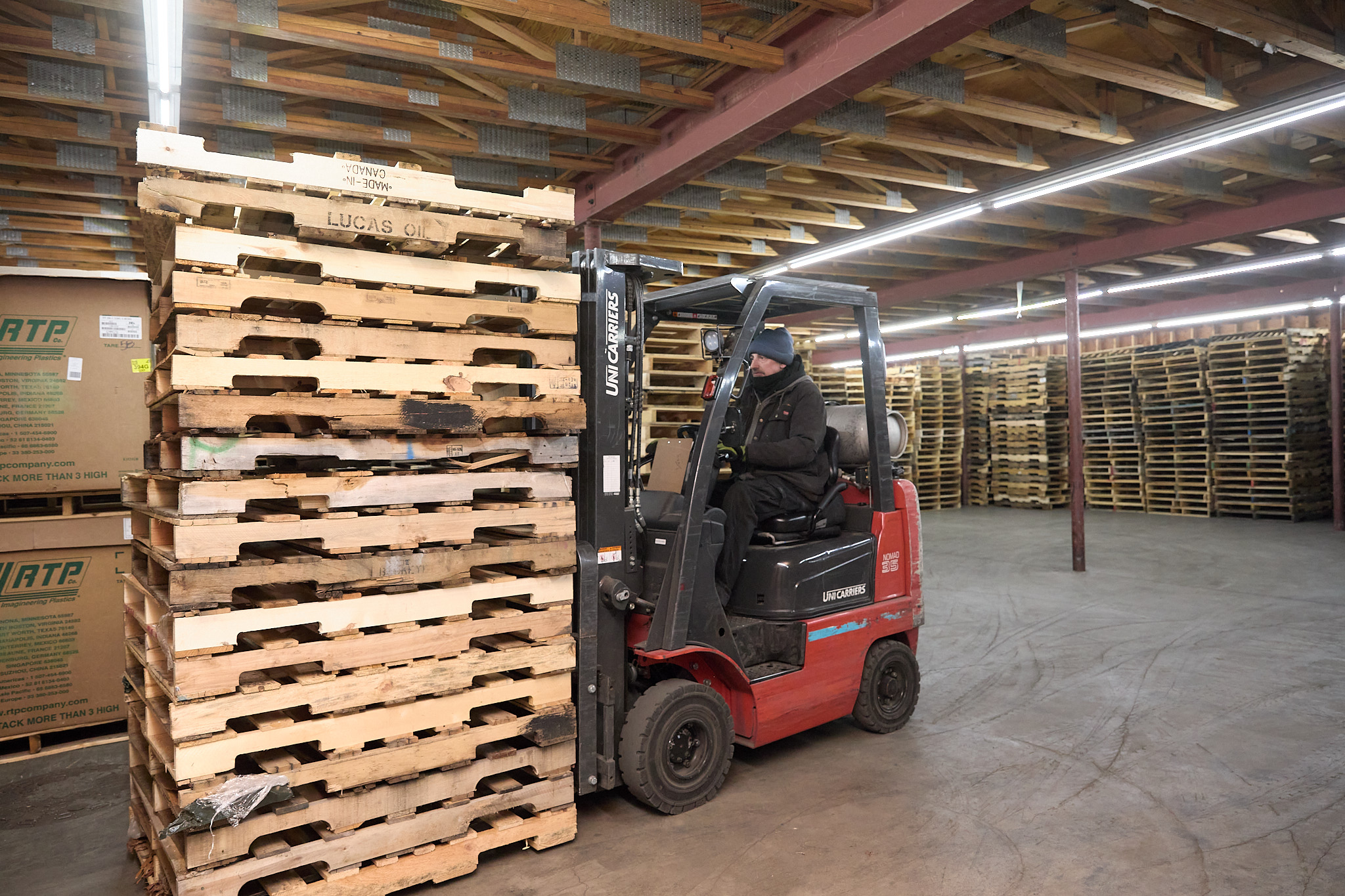If your business deals with storage or shipping, there’s a pretty good chance that you’re using either pallets or Gaylord boxes — and maybe both. But which product is right for your operation? The answer depends on what you’re moving, how you’re moving it, and what happens once it gets there.
Let’s break down when to use a pallet, when to use a Gaylord box, and the key factors to consider before making a decision.
When to Use a Pallet
Pallets are a great choice when you’re moving goods that are:
- Boxed, bagged, or already contained
- Heavy or stacked in uniform loads
- Regularly loaded/unloaded with a forklift
Common pallet uses:
- Shipping cases of product to distributors or retailers
- Bulk materials in bags (like feed or concrete mix)
- Storing heavy equipment or parts
Pallets are also more flexible if your operation relies heavily on racking systems or standardized load sizes. They’re easier to reuse, and with used pallets readily available, they’re also cost-effective.
When to Use a Gaylord Box
Gaylord boxes are the perfect choice when you’re dealing with:
- Loose or irregular materials
- Small parts or components that aren’t boxed
- Returns, scrap, or bulk shipments that need containment
Common Gaylord box uses:
- Collecting and transporting scrap materials or recyclables
- Shipping textiles, plastic resin, or parts
- Managing bulk returns or overflow inventory
Gaylords are especially useful if you need both containment and stackability — or if your products might shift or spill in transit.
Things to Consider Before You Choose
1. Weight of the Load
Heavy items require packaging that won’t buckle under pressure. For loose or bulk materials, go with a double- or triple-wall Gaylord box — these have reinforced corrugated walls designed to handle anywhere from 800 to over 2,000 lbs, depending on the box construction and pallet base.
If your goods are consolidated, boxed, or already stabilized, a sturdy wooden pallet — ideally 4-way entry and built with hardwood or high-quality softwood — can carry even more weight and hold up better to repeated use. Avoid skids or single-face pallets for anything heavy — they’re prone to collapsing under uneven weight.
2. Load Stability
If you’re dealing with loose, irregularly shaped, or spill-prone materials — like shredded plastic, grain, powder, or small parts — a Gaylord box with a liner, inner bag, or folding flaps can keep contents contained and prevent leaks or mess during transport. Some liners are moisture-resistant, making them ideal for semi-wet or sensitive materials.
On the other hand, if your shipment consists of uniform, stackable cartons — such as boxed consumer goods or shrink-wrapped cases — then pallets offer better efficiency. They’re easy to load, wrap, and stack in transit or warehouse racking systems. You can save space and speed up handling without worrying about items shifting or spilling.
3. Forklift or Pallet Jack Access
Pallets offer the cleanest and most direct access for forklifts and pallet jacks, especially if they’re 4-way entry. This makes them ideal for fast-paced environments where goods need to be moved frequently or transferred between trucks, racks, or production lines. They’re also easier to reuse or reposition with minimal prep — just drop the load, wrap it, and go.
Gaylord boxes, meanwhile, usually require a pallet base to be moved safely. Some come pre-attached to pallets (either wood or corrugated), while others must be manually loaded onto one. Without a solid base, they can sag, tear, or become unmanageable when filled. If you’re using Gaylord boxes in your workflow, be sure to factor in the need for compatible pallets — especially if you’re handling heavier or loose materials.
4. Storage Setup
If your facility uses pallet racking or vertical storage, then standard-size pallets (like 48″x40″) are the most efficient option. They’re designed to slot neatly into most racking systems and can be stacked or retrieved with minimal hassle. This is ideal for boxed inventory, retail products, or materials that stay in consistent packaging.
But if you’re storing bulk goods, returns, or scrap materials, Gaylord boxes help keep everything contained. Instead of having loose items scattered across shelves or bins, you can consolidate them into one heavy-duty container. Some operations use Gaylords to collect in-process materials or store parts between production stages. They’re not ideal for racking unless they’re on a pallet base, but they’re great for floor storage and keeping messes to a minimum.
5. Reuse & Recycling
Both used pallets and Gaylord boxes are great ways to cut costs and reduce your environmental footprint — as long as they’re still structurally sound. Used wooden pallets can often handle the same loads as new ones if they’ve been properly inspected and repaired. Look for signs of cracking, loose boards, or split stringers before reuse. If they’re no longer suitable for re-use, its time to dispose of them or use wooden pallets for parts.
Gaylord boxes, especially double- or triple-wall models, are often designed for multiple cycles. Many come from previous use in industries like food processing, plastics, or manufacturing and can still offer excellent strength. Before reusing a Gaylord, check for moisture damage, tears, or weakened seams — especially around the base and corners.
Buying used also helps divert materials from landfills and supports a more circular supply chain — all while saving you money on packaging costs. Just be sure your reused materials are appropriate for the product, weight, and handling conditions you’re dealing with.
Still Need Help Figuring It Out?
If you’re still not sure what makes the most sense for your business? That’s where we come in. Whether you need a custom solution or just a solid supply of used pallets or Gaylord boxes, we’ve got you covered — and we’ll always help you choose the right fit for your operation.


Leave a Reply